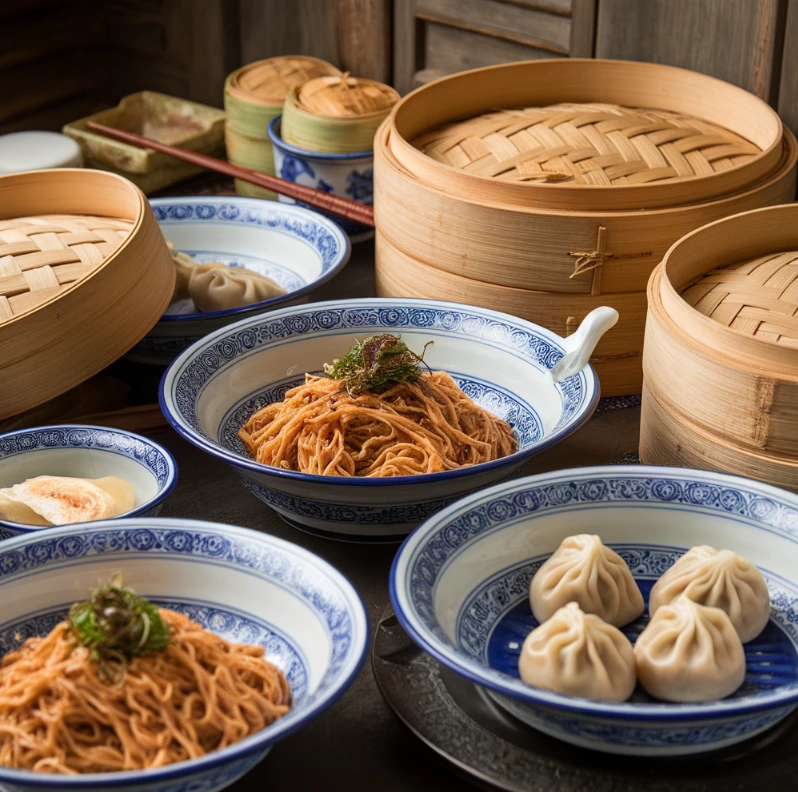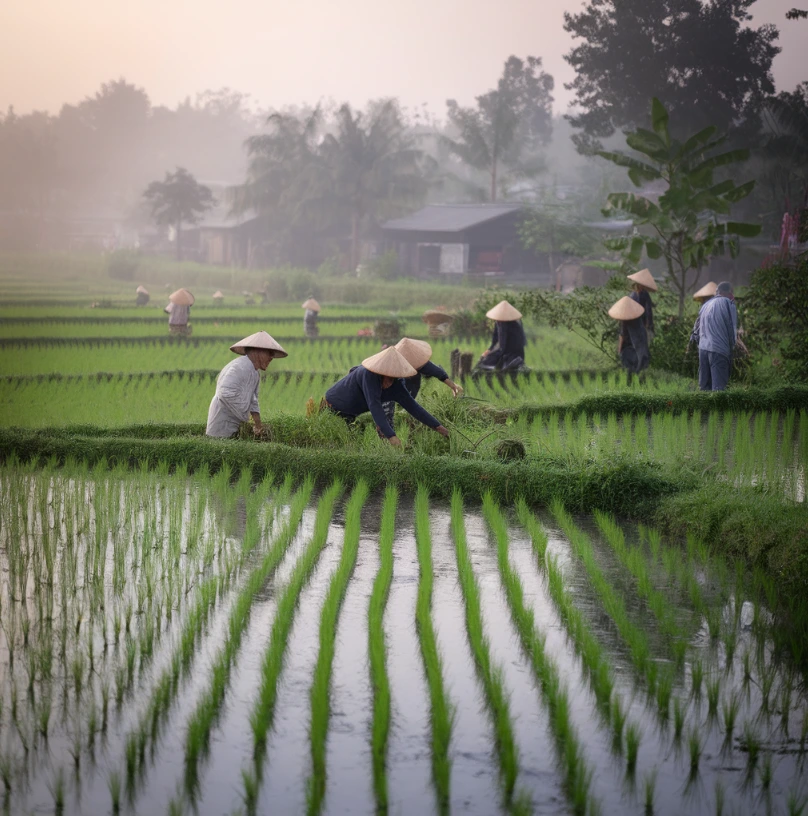China’s vast culinary and agricultural diversity reflects its rich history and geography. While rice is often celebrated as the cornerstone of Chinese cuisine, many regions prefer wheat as their staple. These wheat-consuming regions in China showcase a unique culinary identity where wheat dominates the diet.
This regional divide between rice and wheat stems from differences in geography, climate, and cultural traditions. Northern China, with its dry and cold climate, supports crops like wheat, barley, and millet. Provinces such as Hebei, Shanxi, and Henan transform these crops into iconic dishes. Staples like hand-pulled noodles, steamed buns, and dumplings define the cuisine in these areas.
In contrast, southern China, with its warm and humid environment, favors rice cultivation. This has created a culinary landscape that contrasts with the wheat-based dishes of the north. Exploring these wheat-eating habits and the northern China dietary staples reveals how history, geography, and innovation shape Chinese food culture. Let’s dive deeper into this fascinating story.

China’s Geography: Understanding Which Parts of China Eat More Wheat Than Rice
China’s diverse geography plays a crucial role in determining dietary habits, particularly in identifying which parts of China eat more wheat than rice. The country divides into two primary agricultural zones, each with its own climate and staple crop preferences.
- Northern China: Regions Dominated by Wheat Cultivation
The dry, cold winters and continental climate of northern China favor wheat, barley, and millet cultivation. Farmers actively grow these resilient crops to sustain the population. - Southern China: Areas Where Rice is the Staple
In contrast, the humid subtropical climate of southern China supports lush rice paddies. Abundant rainfall allows for multiple harvests annually, making rice the dominant dietary staple in these provinces.
Wheat-Consuming Provinces: Where Wheat-Based Diets Flourish in China
Provinces such as Hebei, Shanxi, Shandong, and Henan are among the areas in China where wheat dominates. These regions highlight the deep connection between agriculture and cuisine, showcasing dishes rich in cultural significance:
- Noodles: Iconic hand-pulled noodles like lamian are a culinary staple in northern Chinese homes.
- Steamed Buns (Mantou): A soft, fluffy alternative to bread that complements any meal.
- Dumplings: Loved for their symbolic prosperity, dumplings remain a festive favorite.
Explore more about these culinary traditions in wheat-consuming regions in our guide to staples of a wheat-based diet.es of a wheat-based diet.nsuming regions in China, check out our guide to staples of a wheat-based diet.
Economic Factors and Food Distribution in Regions Where Wheat is Preferred
Economic policies have shaped regional dietary patterns, showing which parts of China eat more wheat than rice. During imperial times, feeding the population required maximizing agricultural output. Northern China, with its cold and dry climate, relied on wheat for its durability and versatility. This ensured people had food during harsh seasons. Southern China, with fertile land and a humid climate, specialized in rice cultivation.
Modern transportation has bridged regional differences, but culinary traditions remain distinct. In wheat-consuming regions of China, dishes like dumplings, noodles, and flatbreads are still staples. These foods highlight the enduring cultural importance of wheat.
Cultural Influence on Diet Preferences in Wheat-Consuming and Rice-Dominant Regions
The divide between wheat and rice consumption in China shows centuries of adaptation. The Yellow River Basin, considered the cradle of Chinese civilization, is closely tied to wheat cultivation. Early farming advancements here created dietary habits that remain significant in northern provinces.
The Yangtze River Delta, known for rice farming, influenced southern provinces like Guangdong and Jiangsu. This regional divide in staple crops shaped unique cuisines. It reflects the agricultural and cultural evolution of each area. Learn more about traditional staples in these regions. regional food histories, check out our guide to traditional staples.
Economic Factors and Food Distribution in Wheat-Dominant Regions of China
Economic policies have long influenced regional dietary habits, shaping which parts of China eat more wheat than rice. During imperial times, sustaining the vast population required maximizing agricultural yields. Northern China, with its colder climate and challenging terrain, leaned heavily on wheat for its versatility, storability, and ability to feed large communities efficiently. In contrast, southern China focused on rice cultivation, leveraging its humid climate and fertile land.
Today, while modern transportation and logistics have blurred regional distinctions, deeply ingrained culinary traditions persist. This is particularly evident in wheat-consuming regions of China, where traditional dishes like dumplings, steamed buns, and pancakes remain staples of the local diet. Curious about how pancakes vary globally? Explore pancake varieties around the world.

Staples of a Wheat-Based Diet
Wheat-preferred regions in China boast a rich and diverse culinary repertoire, deeply tied to their agricultural traditions and cultural identity. These regions are known for iconic dishes that have become staples across the country:
- Noodles: Signature dishes such as lamian are a favorite across northern provinces, reflecting the adaptability and richness of wheat as a primary ingredient.
- Dumplings: Often enjoyed during festivals and family gatherings, dumplings symbolize prosperity and unity, making them a beloved choice in many northern households.
- Flatbreads and Pancakes: Local variations like jianbing and stuffed buns are integral to everyday meals, providing hearty and flavorful options for all occasions.
When exploring which parts of China eat more wheat than rice, it’s clear that the culinary traditions of these wheat-dominant areas have contributed immensely to the nation’s food culture. Discover more recipes and cooking techniques for classic wheat-based dishes here.
Nutritional Perspectives: Wheat vs. Rice in China
From a nutritional standpoint, wheat-based foods generally provide more protein and fiber than rice, making them a better fit for the colder climates of northern China. In the wheat-consuming regions of China, hearty meals like noodles and steamed buns provide the energy needed to endure harsh winters. This dietary pattern aligns with the demands of the region’s climate and has been central to its culinary evolution.
Modern Trends: Wheat’s Growing Popularity in China
The globalization of cuisine has brought wheat-based dishes into the traditionally rice-dominated southern provinces. Urbanization has also spurred the demand for convenience foods such as bread and pasta, subtly shifting dietary preferences. In this ongoing transition, the culinary divide between wheat and rice in the Chinese diet continues to blur, reflecting both tradition and modern influences.
Conclusion: Celebrating Culinary Diversity Across China
China’s dietary dichotomy of wheat versus rice is a testament to its vast geography, rich culture, and deep-rooted history. From the hearty, robust dishes of wheat-preference areas in northern China to the delicate, rice-based meals of the southern provinces, every region showcases its unique flavors and traditions. This diversity isn’t just about food—it’s a reflection of how climate, agriculture, and cultural evolution have shaped a nation’s palate over centuries.
Whether you savor a steaming bowl of hand-pulled noodles from the wheat-consuming regions of China or a fragrant plate of jasmine rice from the south, you’re partaking in a culinary heritage that is as varied as it is profound. Each meal is a story, connecting people to the land and their ancestors.
Feeling inspired to explore Chinese cuisine at home? Dive into exciting recipes and ideas on platforms like Tasty, AllRecipes, or Delish. These resources offer a treasure trove of inspiration to bring the flavors of China to your kitchen and further appreciate the artistry of this globally celebrated cuisine.


